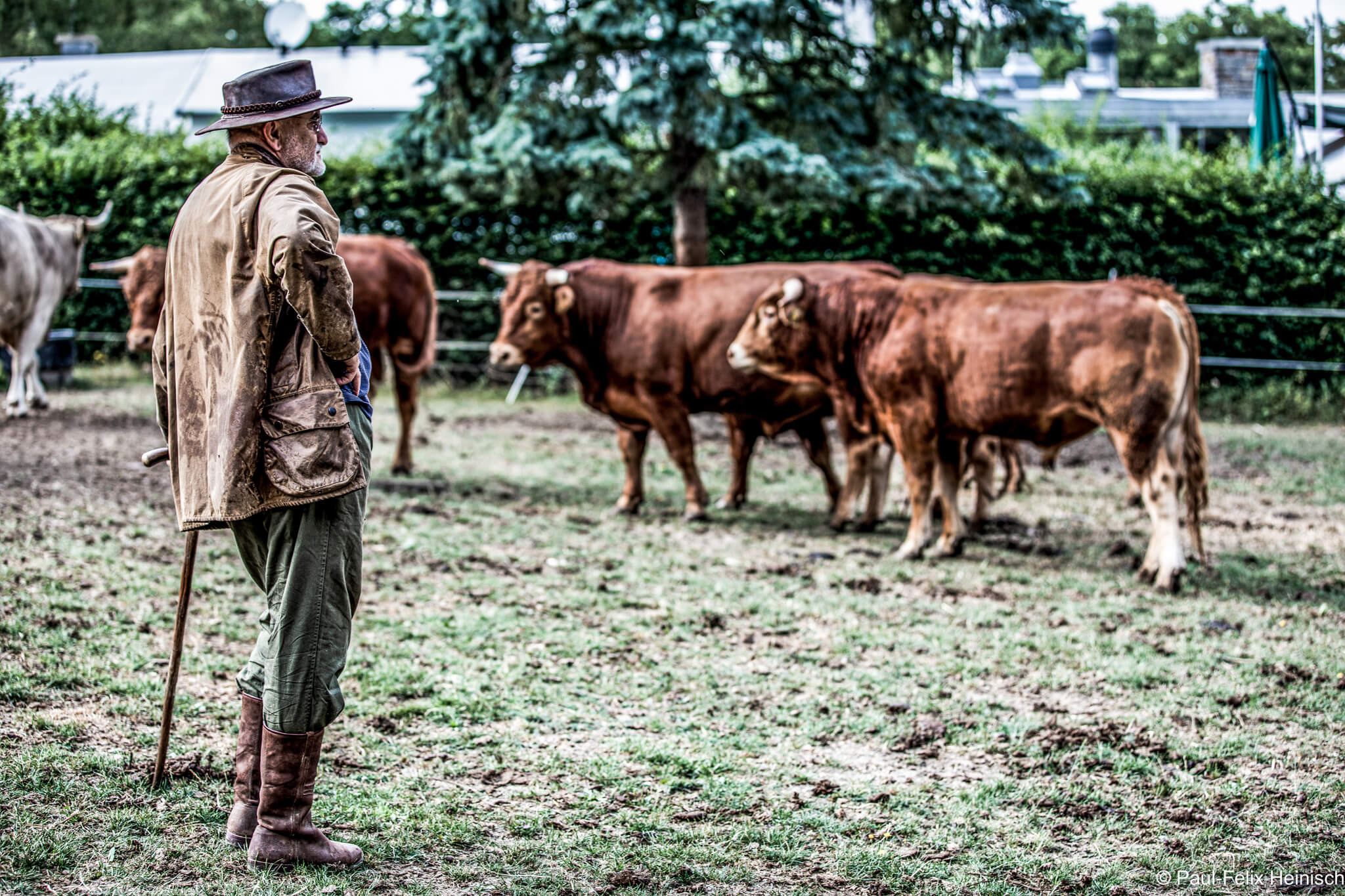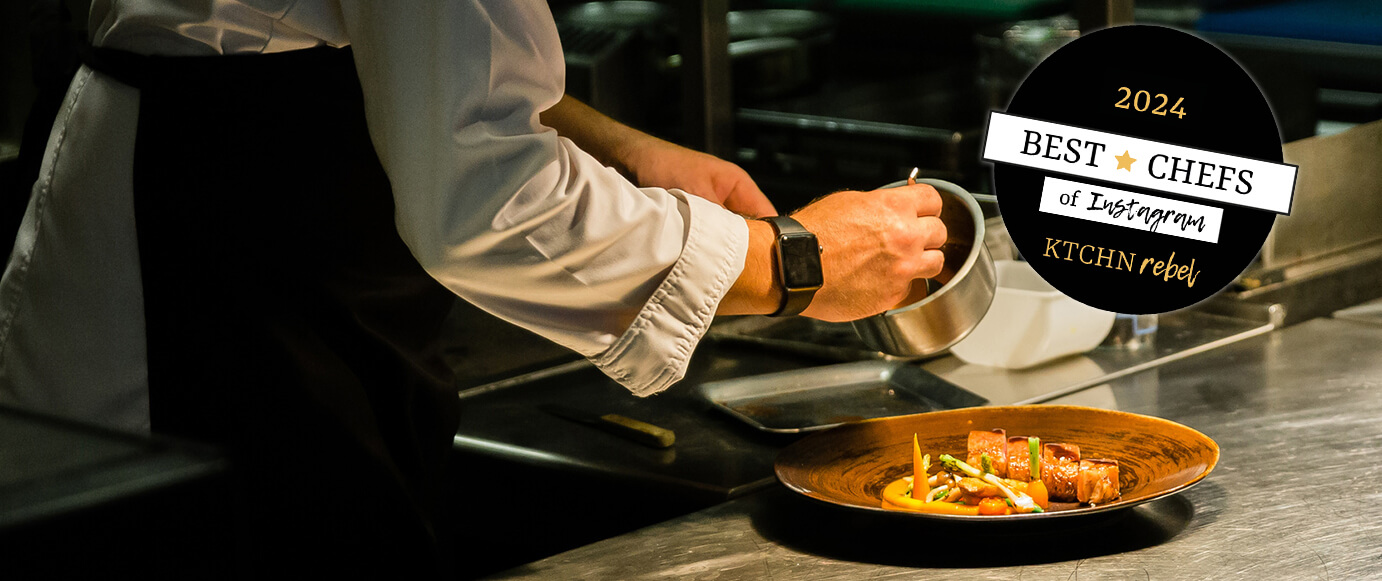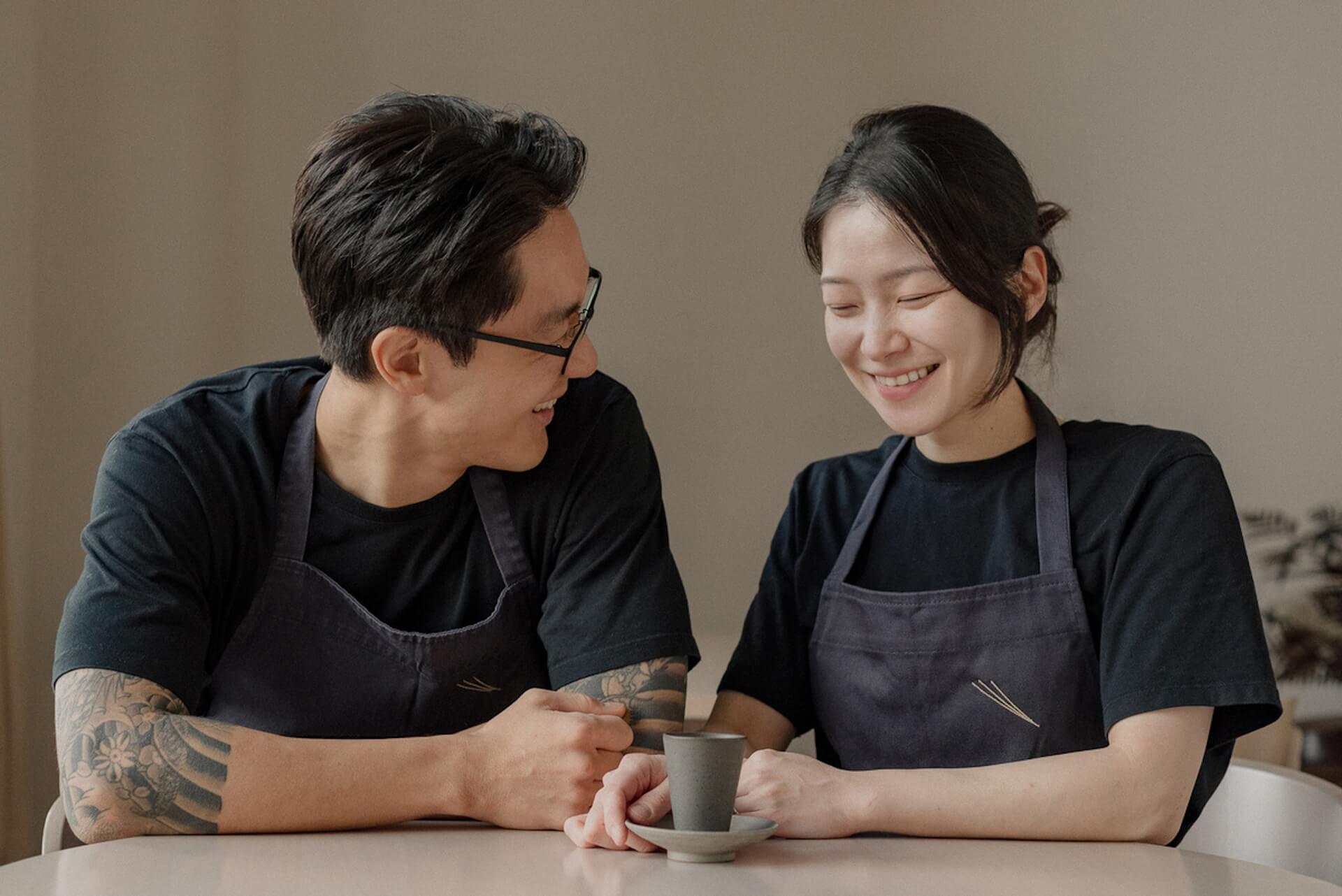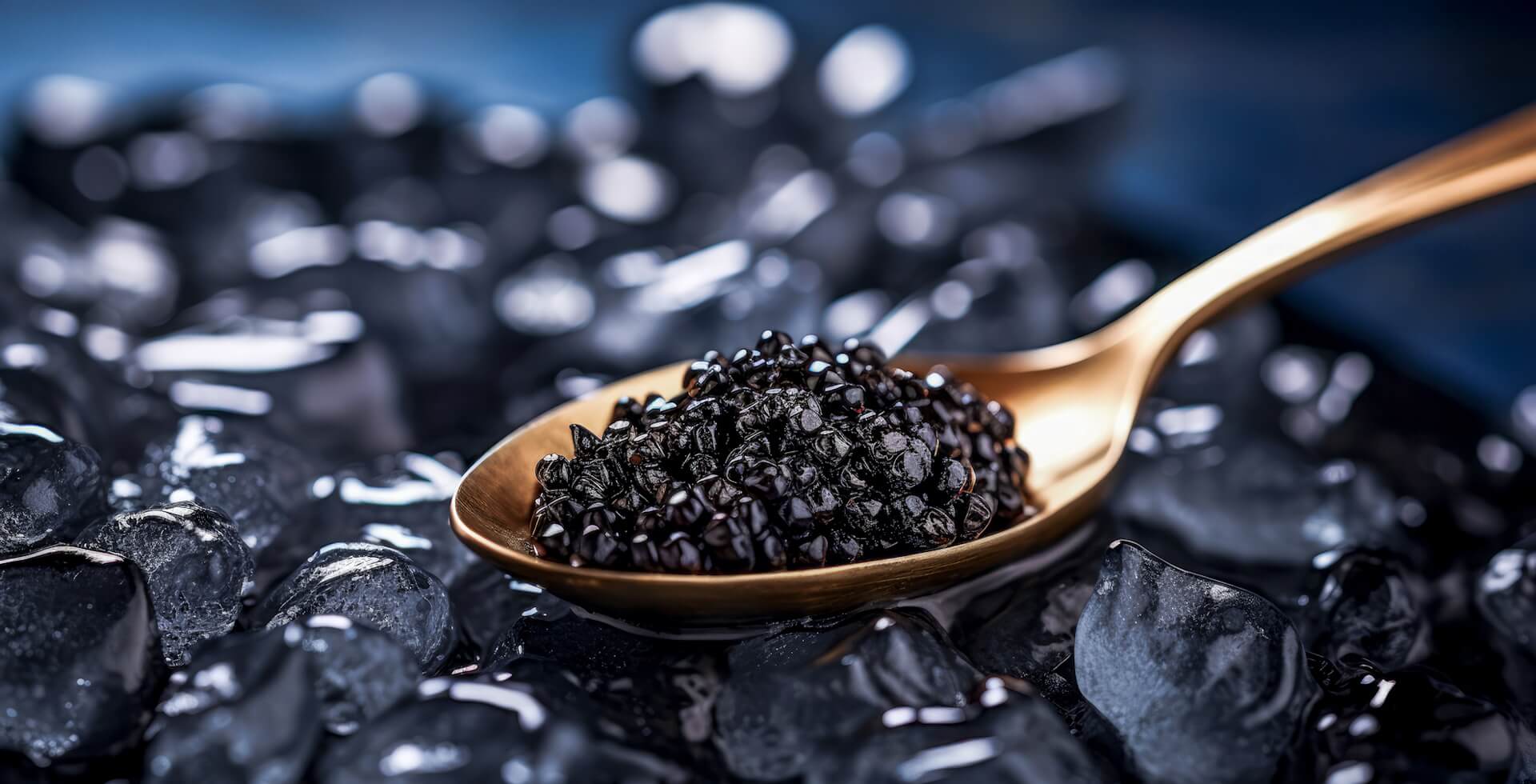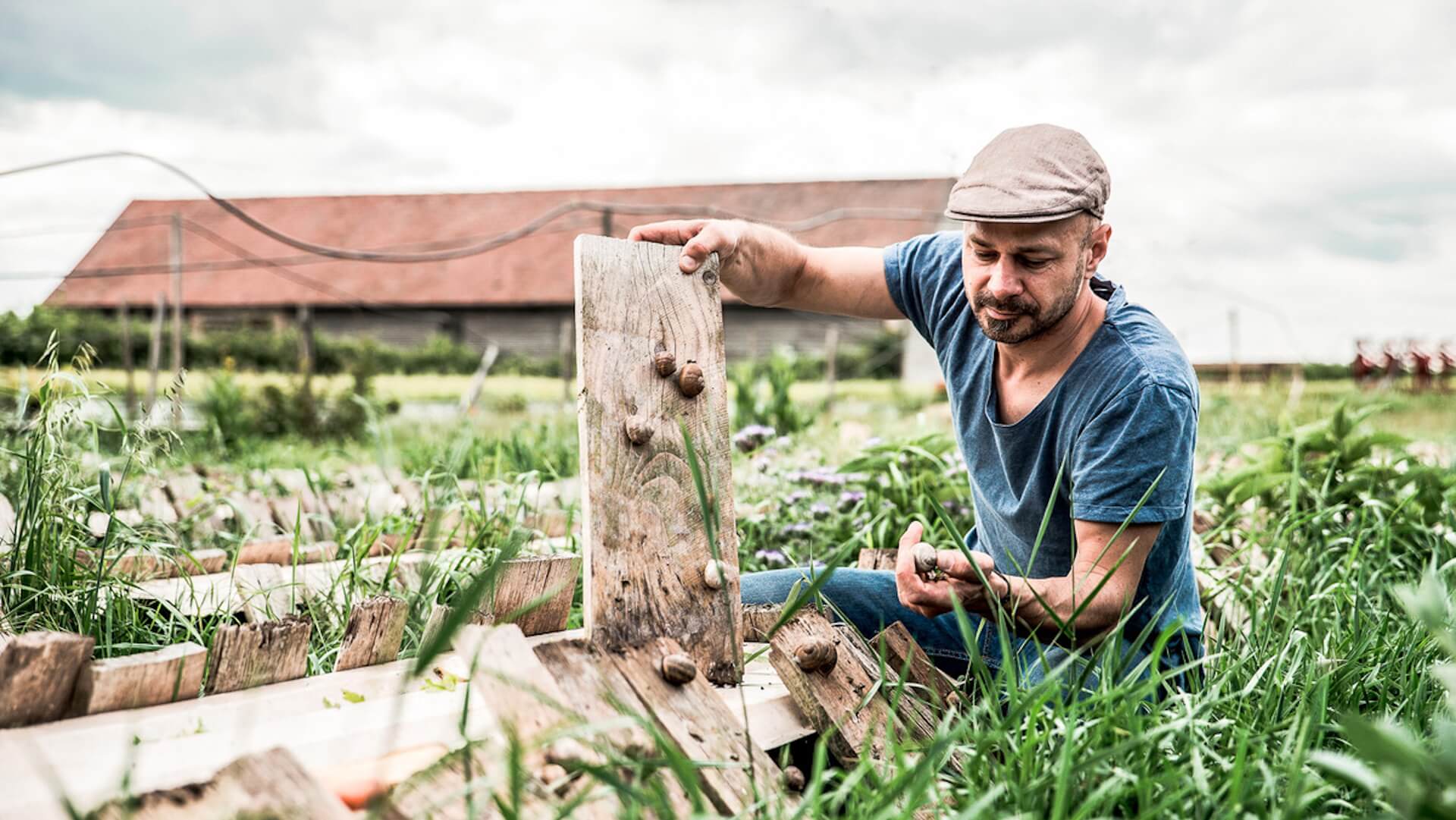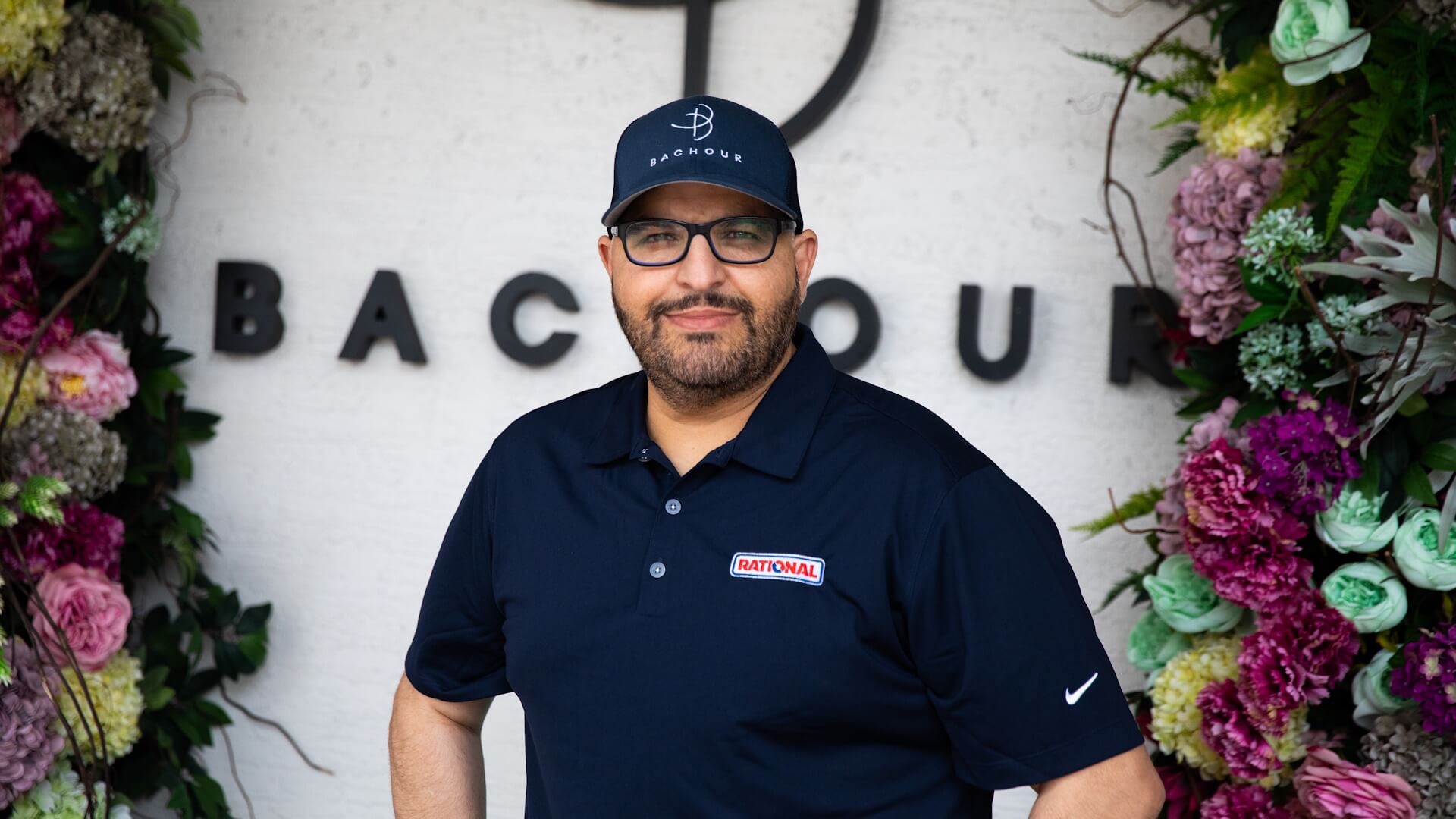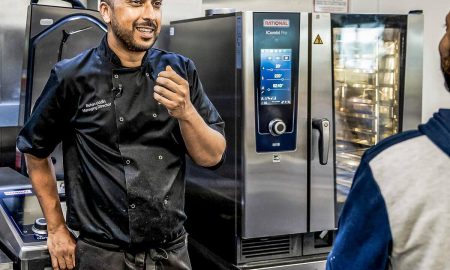Although meat is a valuable food source, scandals involving factory farming or illegal practices keep emerging. It is not just the guests who want to know exactly where their meat comes from. Quality, regionality, sustainability and animal welfare are becoming increasingly important. Why do some top chefs breed the animals themselves? What do they think of vegetarian or vegan cuisine? And what advice do they give their colleagues?
The pioneer of Falkenhof
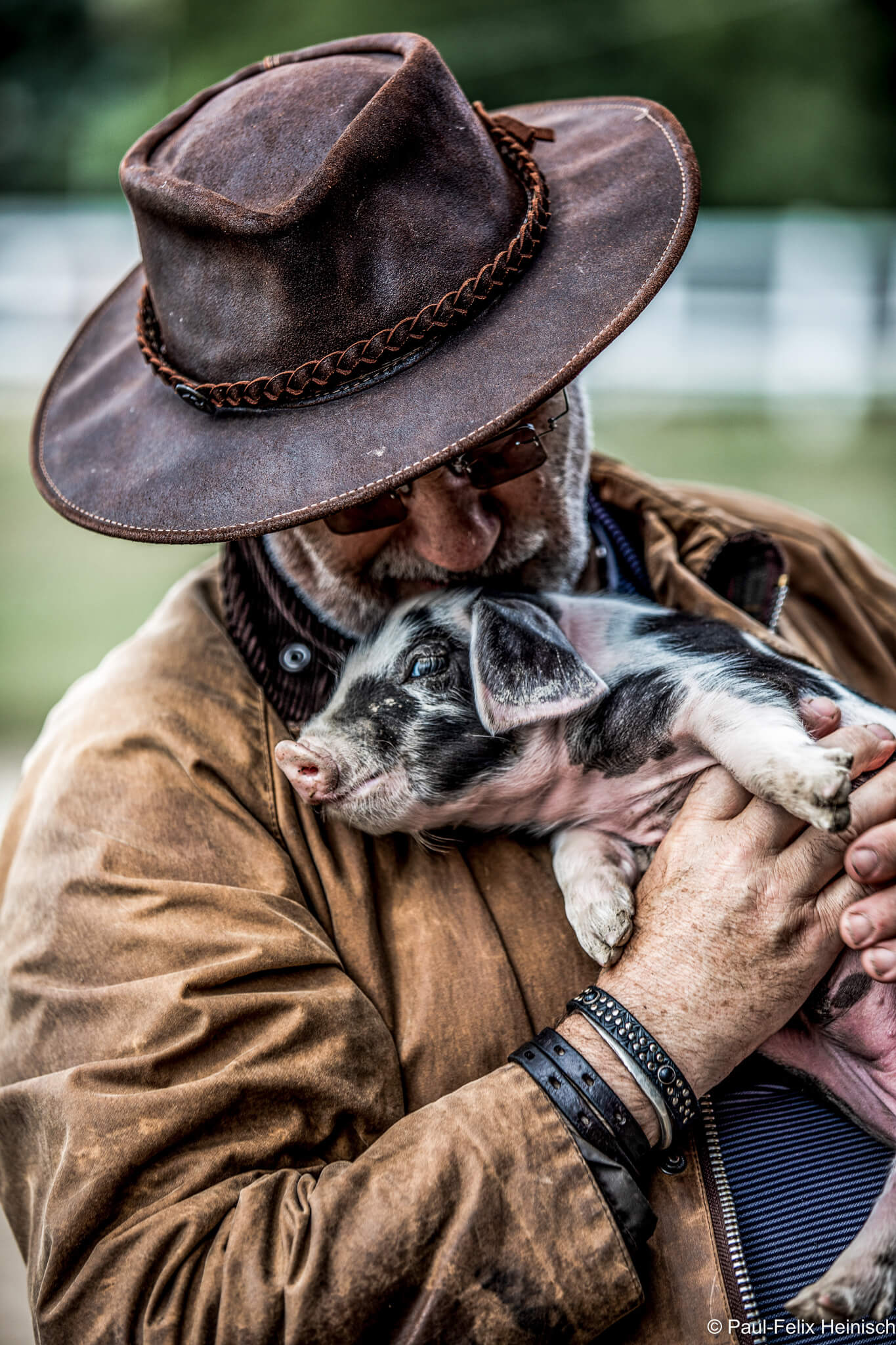
Franz Keller | Image: Paul-Felix Heinisch
Cattle and pig breeding following organic standards
For over 14 years, Franz Keller has been breeding cattle and pigs according to organic standards at Falkenhof in Taunus. “Good meat is essential for my Falkenhof and the Adler Wirtschaft restaurant run by my son.” The issue of animal welfare is important to him, and his animals are kept in a humane and species-appropriate manner. “The pigs go outdoors all year round. As for the cattle, they spend as much time as possible on pasture – they only partly live in the barn in Winter.” They are also treated respectfully in the end: Most of the slaughtering takes place in an organically certified slaughterhouse, which is about seven miles away. “Sometimes we also slaughter ourselves at the farm,” says Keller. The whole animal is processed – from head to toe. “Even the fur is tanned in Germany and used to make knife and laptop bags,” explains the chef.
From simple to the best
Franz Keller comes from a family of restaurateurs with a butcher’s shop in Vogsburg-Oberbergen near Freiburg. He learned his craft from Paul Bocuse and Jean Ducloux. After earning a total of five Michelin stars, he left star-rated gastronomy in 1993 to open Adler Wirtschaft. His motto: “The best of the simplest.” To achieve the desired quality, he began creating his own meat. His cattle are a cross between Limousin and Charolais with a Kobe bull. The farm is also home to variegated Bentheimer pigs, a rare breed that has a lot of fat. “A pig must be fat,” Keller stresses. His pigs live up to one and a half years, and the cattle for three years. “The meat is not really mature until then,” says the 72-year-old. “We have to respect the animals, because they feed us”. What does the meat expert think about vegetarian cuisine? “I like the idea of eating less meat,” says Keller. “It’s okay for society to reorient itself”. However, he can’t really understand the vegan boom. “To me, veganism is a hyped-up fad, a huge market. Our markets react very quickly. That’s why there’s vegan schnitzel.” For him, a strictly vegan diet would be the wrong way to go.
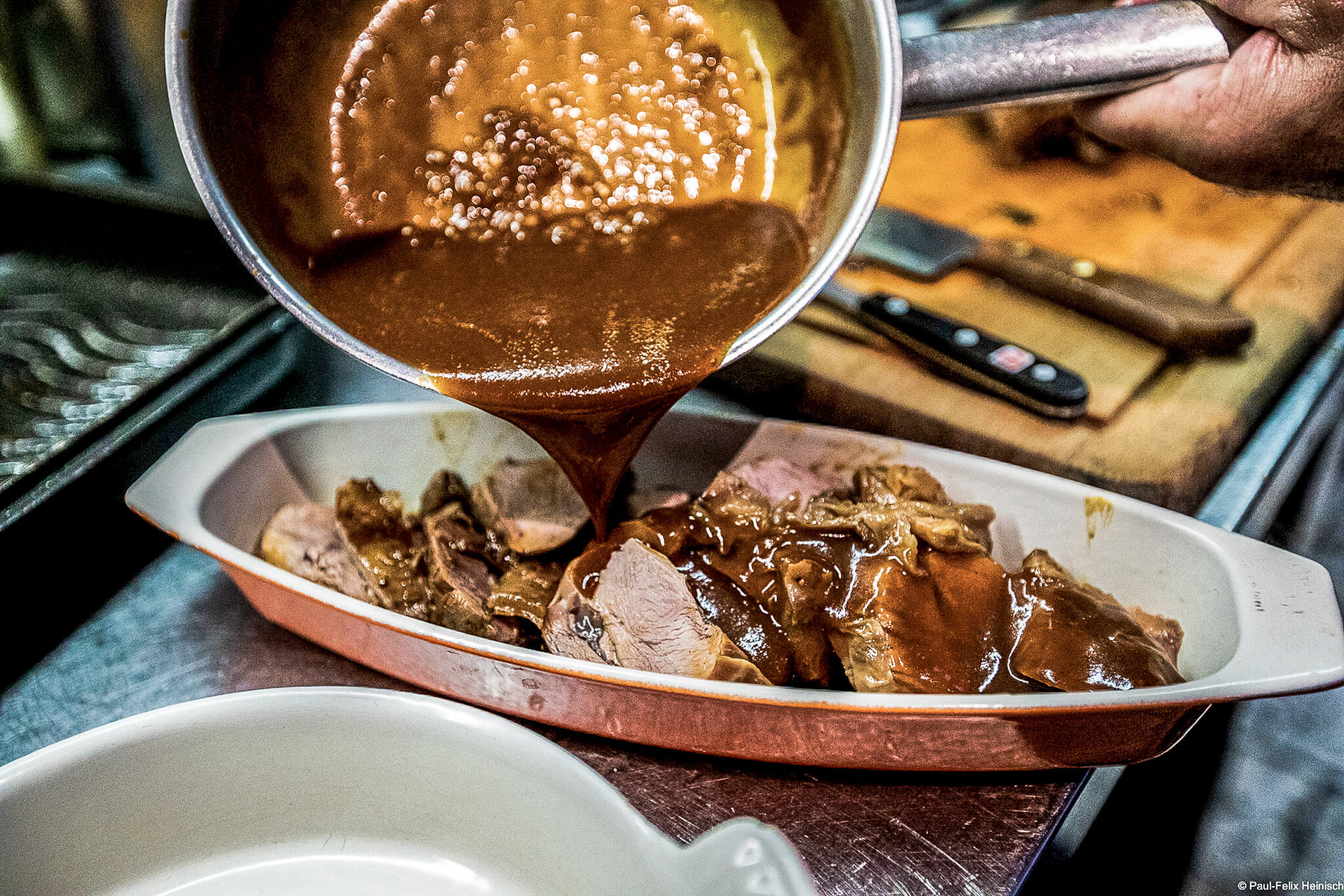
Image: Paul-Felix Heinisch
Climate change and regionality
Keller at Falkenhof uses his meat for cooking classes, kitchen parties and at Adler Wirtschaft. Because of Corona, the company underwent a shift and now also sells to private customers. You can pre-order beef burger patties, beef and pork sausages as well as steak and pick them up at Falkenhof every two to three months. In the future, he will probably breed fewer animals. “Climate change means I have to reduce the size of my herd – unfortunately, the pastures are often too dry,” laments the top chef.
His tip? “Find partners from the region, farmers who breed their animals according to animal welfare standards. Nowadays there are some great organic farms. Since my son has taken over the restaurant, I could devote myself entirely to breeding.”
Everything from the water buffalo
The “Valvs” – Valentin Schwencke (25), Amelie Schweisfurth (23) and Vuong Pham Huu (28) from Büffelhof (buffalo farm) in Beuerbach, Bavaria – are a very young team indeed. The cooking trio breeds water buffalo and mangalitza wool pigs.
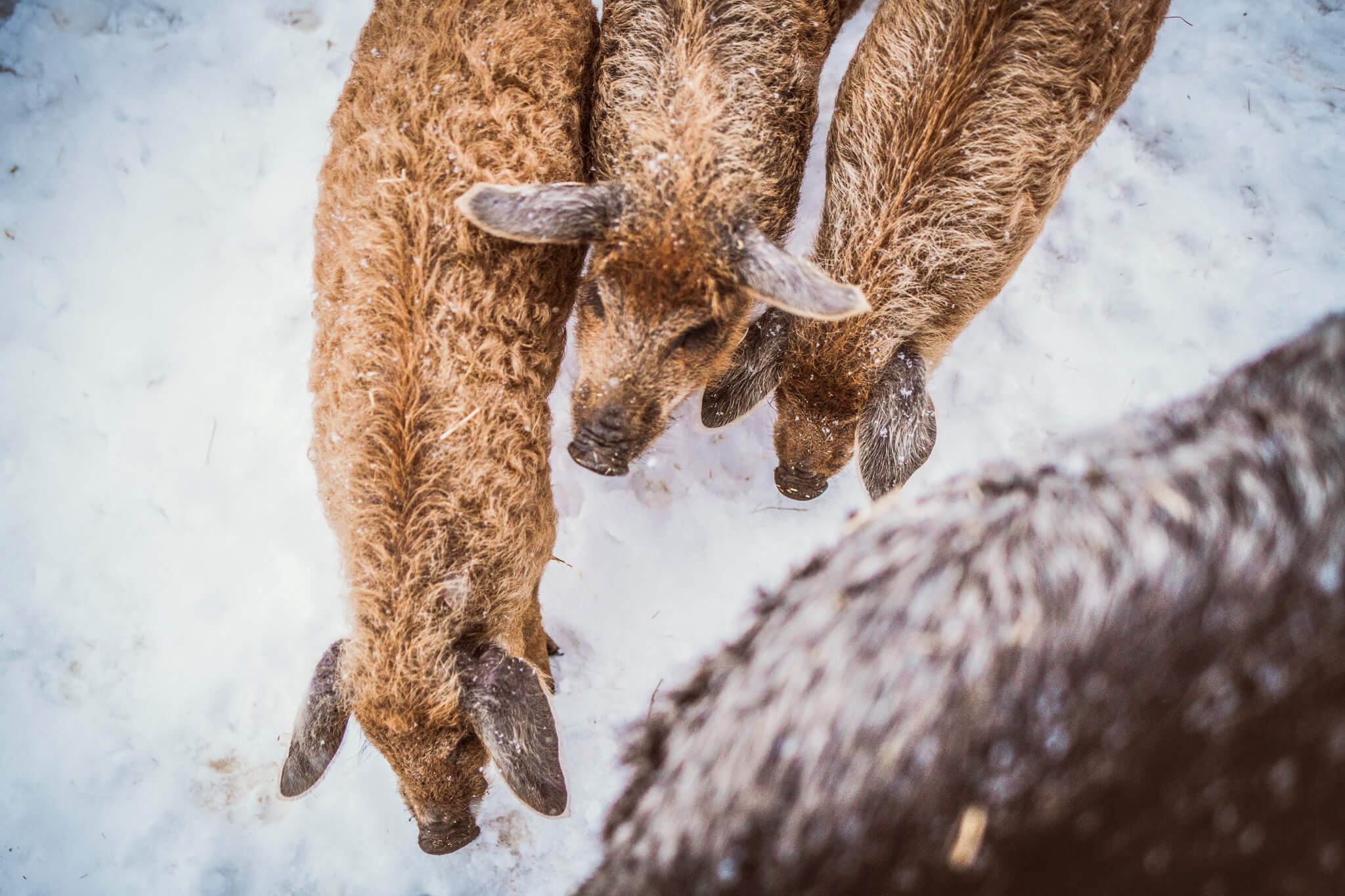
Image: Matthias Nager
Breeding with history
“The buffalo farm was used for breeding in the past. We wanted to pick it up again. For us, having a direct relationship with the animals is very important. We also grew up with animals,” stresses Amelie Schweisfurth. In the past, the breeding operation at the buffalo farm was much larger and was run by Valentin Schwencke’s father. After opening the restaurant with an event location in 2019, they outsourced the buffalo breeding. However, buffaloes have been back on the farm since last year and the first calf was born in November 2021. “We were really excited when the first calf was born,” says Schwencke. Ten water buffaloes, one bull, five suckling cows and four calves now live on the buffalo farm. There are also 18 Mangalitza pigs wandering around. “The pigs have a lot of fat on their backs and necks, which makes for great chops, lardo or sirloin steaks,” explains Valentin Schwencke. The animals are fed every morning – only then can the trio head to the kitchen.
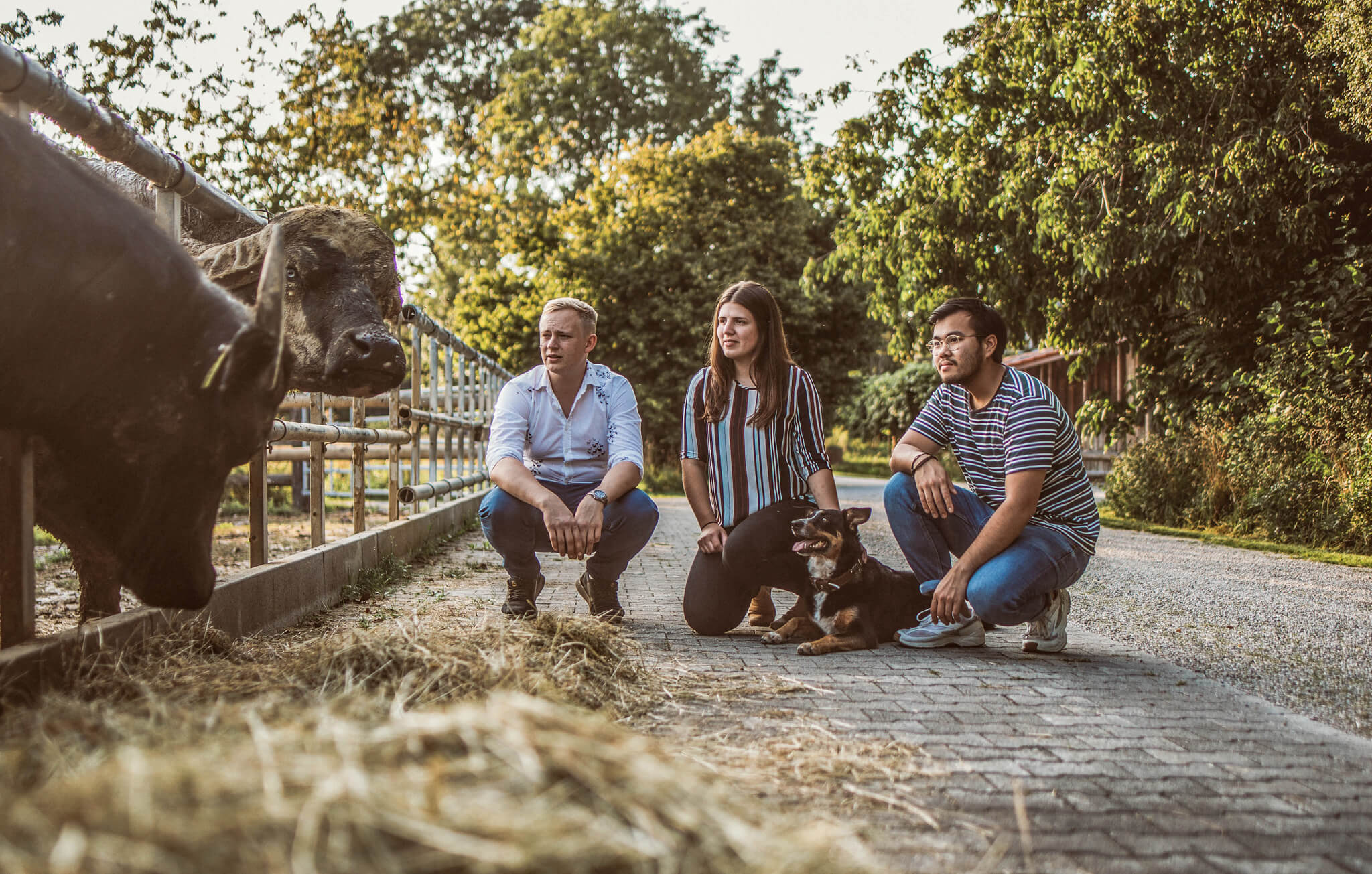
Image: Matthias Nager
From nose to tail: Meat consumption and sustainability are not mutually exclusive
According to the motto “from nose to tail”, one animal is completely utilized every few months. “The buffalo are shot at the farm by a hunter and then chopped up at a butcher shop nearby. We get the meat cut in the way we can best use it. We drive the pigs to the butcher for slaughter,” says Schwencke. “We greatly value sustainability.”
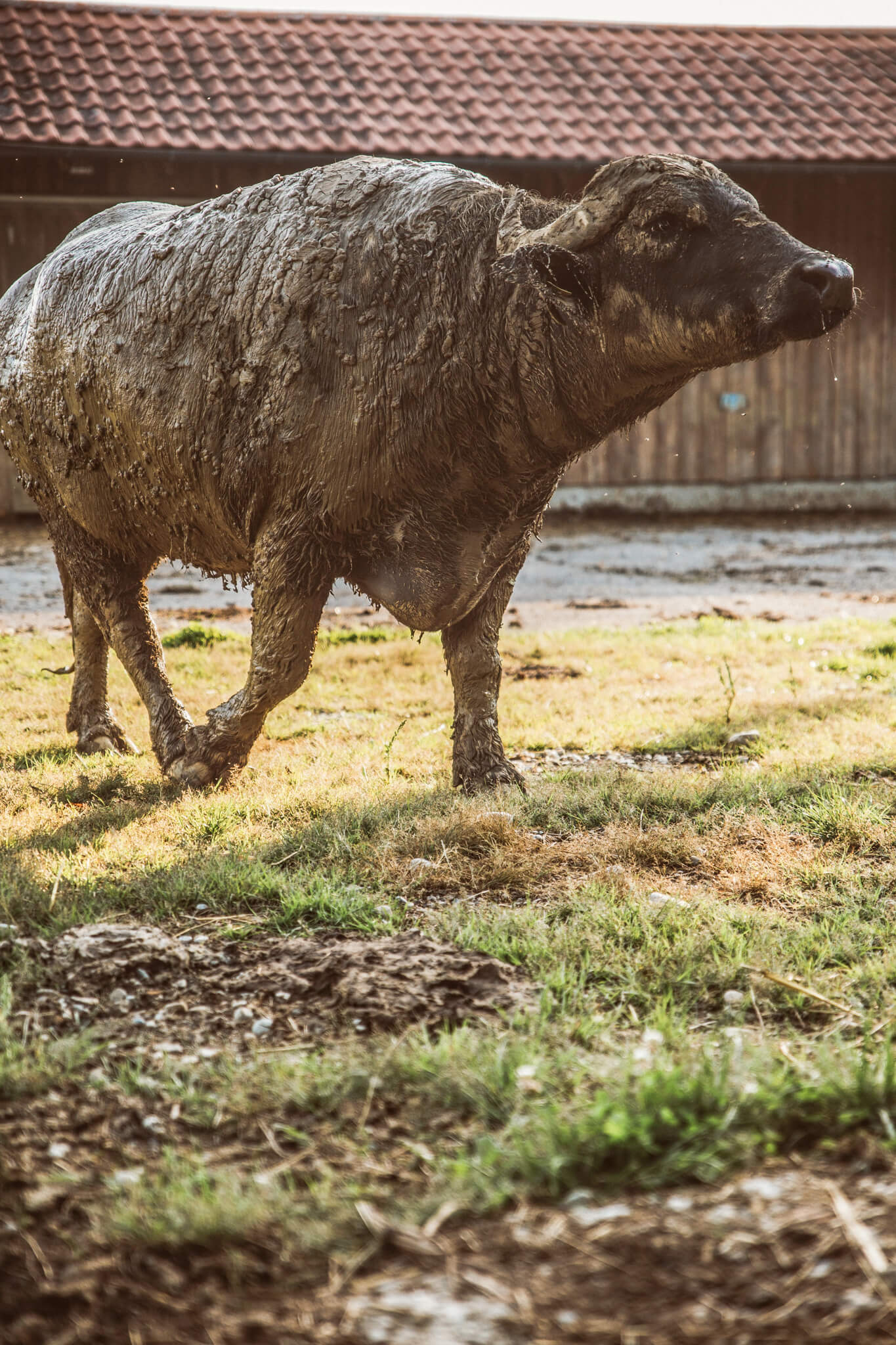
Image: Matthias Nager
However, sustainable farming with direct and holistic processing is not in competition with a vegan diet. “We would much rather see a combination of both – if you can do without a lot of meat and dairy products by creating attractive alternatives,” says Amelie Schweisfurth. They also find fermentation very interesting. “We are increasingly trying to develop vegan dishes that consist exclusively of regional products and can be produced without additives according to all trade rules”. At the buffalo farm there are many guests who consciously forgo meat – but still want to try a buffalo. “In the future, this will give us the opportunity to gain a general basic understanding of natural foods that come directly from our region,” says Schwencke.
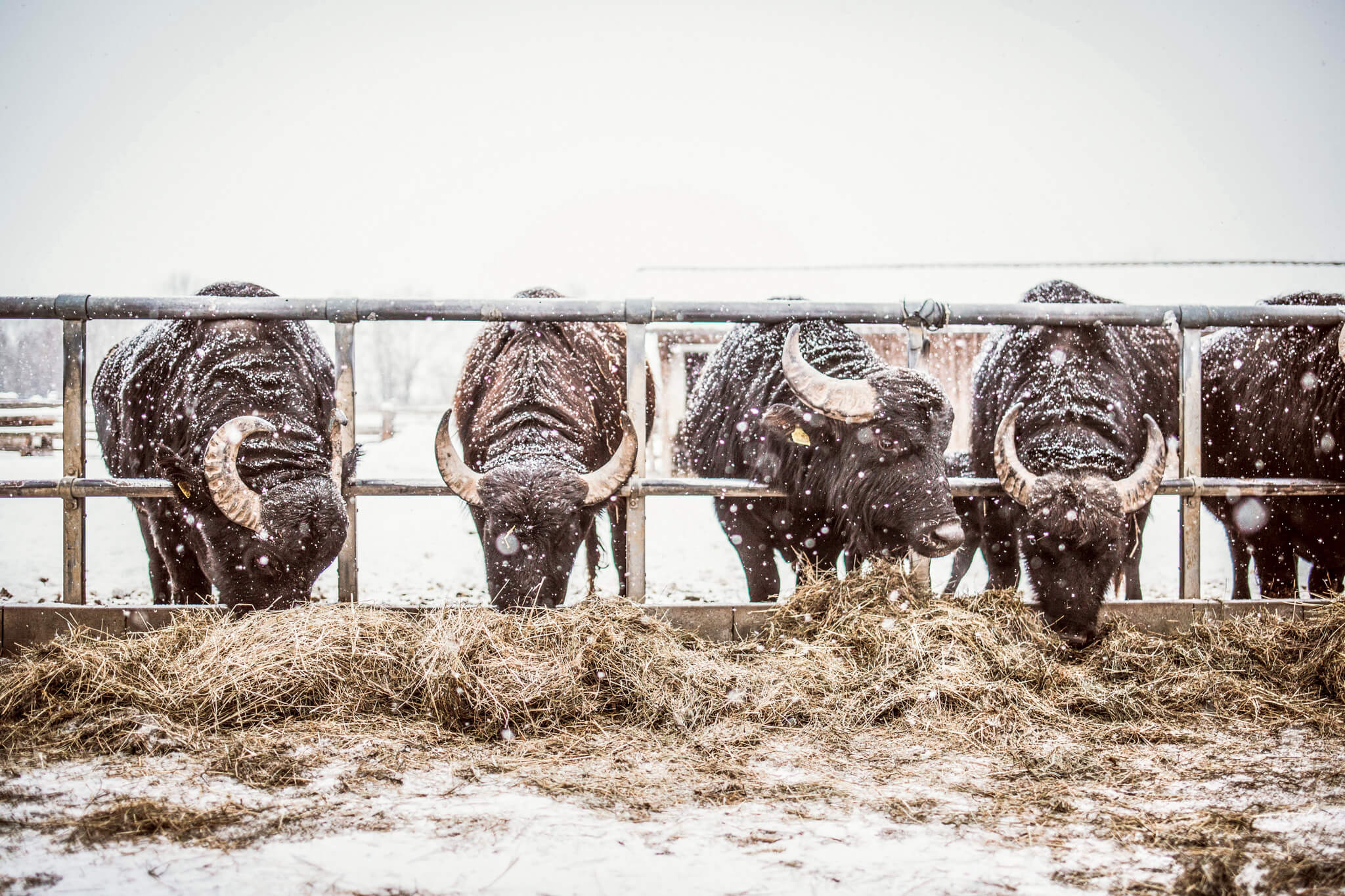
Image: Matthias Nager
The buffalo meat is for their own use only. “Of course we sometimes have special requests from regular guests, and then we are happy to put some aside,” reveals Schwencke. The farm store sells homemade products such as sausage, stocks and sauces.
A tip: “In the beginning, it is certainly useful to cooperate with a partner company, where you can also buy other meat and swap experiences.” Otherwise you should start slowly. “This is the best way to learn how to handle the animals. On top of that, the amount of work it takes won’t overwhelm you right away,” says Schweisfurth.
Save old poultry breeds
Another pioneer is French chef Frédéric Ménager. “Twenty years ago, I had a lot of trouble finding products with the quality I wanted. That’s why I came up with the idea of running my own organic farm, and producing vegetables and meat myself.” The Ferme de la Ruchotte is near Beaune in Burgundy. “My goal is healthy natural cuisine. A cuisine that nourishes the body and soul,” stresses Ménager.
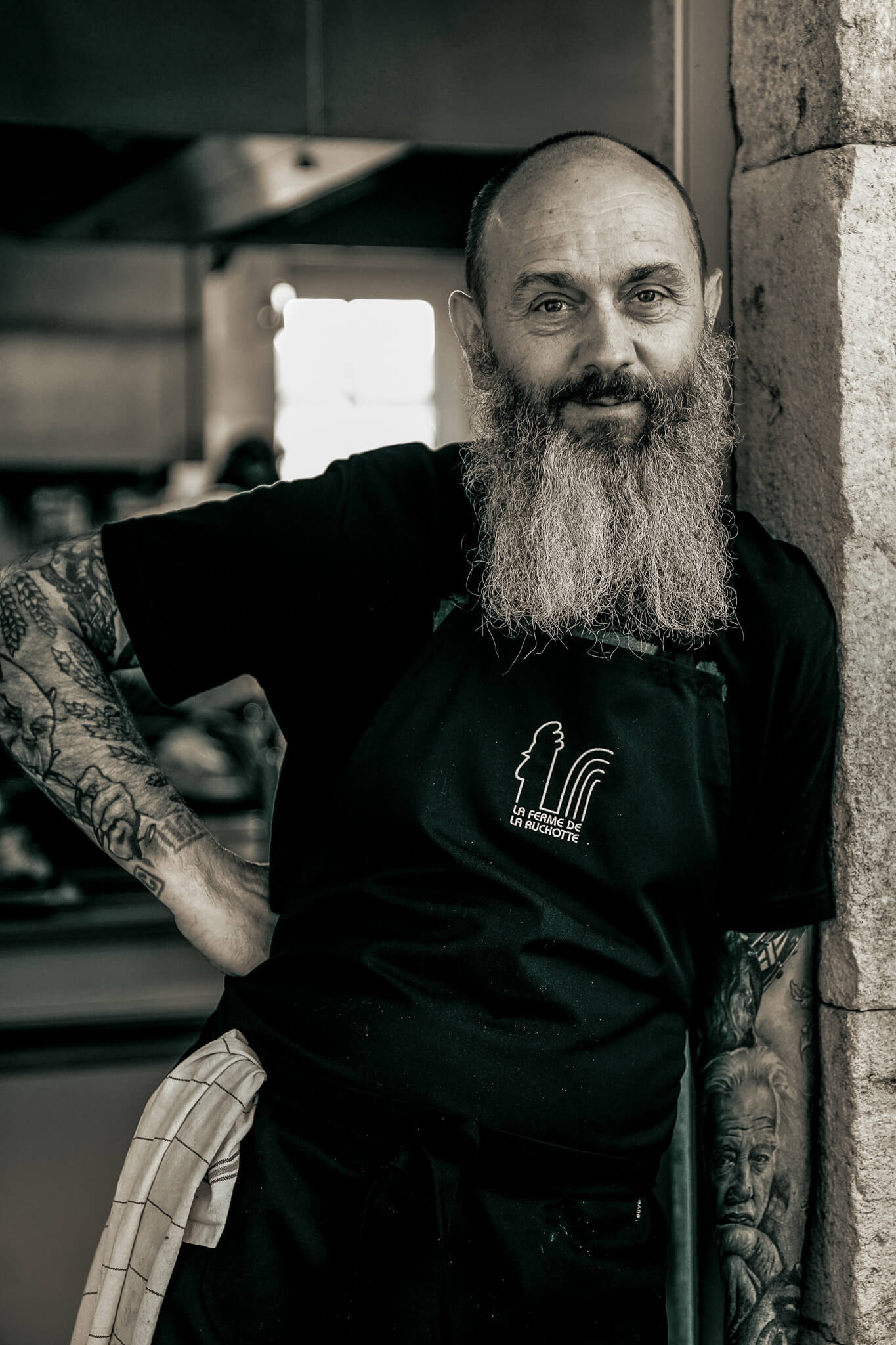
Frédéric Ménager | Image: Aurelio Rodriguez
Five-course menu made with ingredients grown in-house
In his country inn he offers five-course menus, composed exclusively of products from his farm. “My cuisine has become more important because of the farm.” His days began with the animals. “The rhythm of the country inn is based entirely on the rhythm of life on the farm,” says the chef, who worked with Alain Chapel at Hotel Balzac.
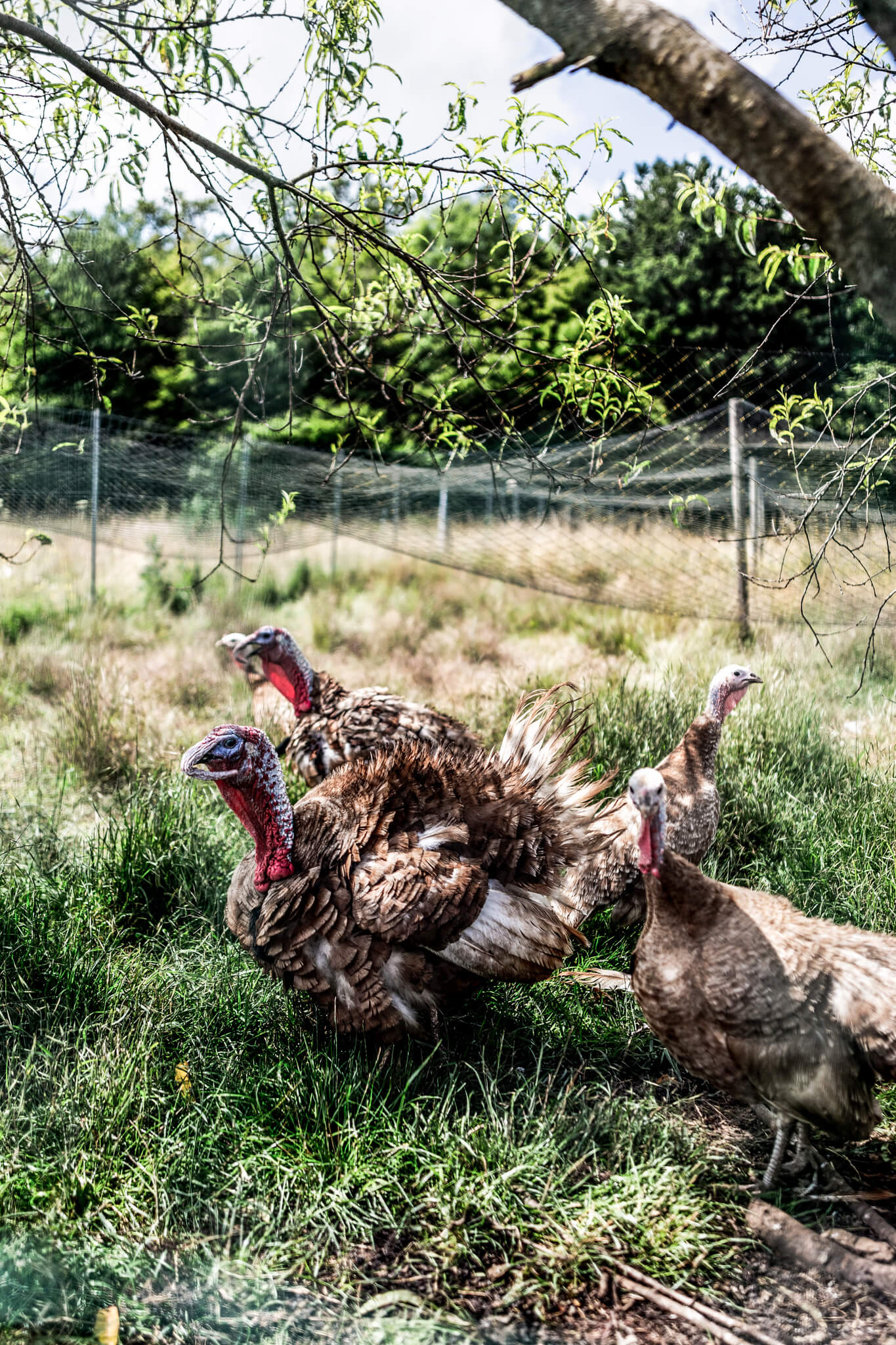
Image: Aurelio Rodriguez
On the farm, the top chef looks after eight varieties of poultry from Gascony, with a preference for old breeds such as Barbezieux, La Fleche, Le Mans, Marans and red turkeys from the Ardennes. He also has black pigs from Bigorre. He breeds about 1,500 and 2,000 head of fowl every year. Ménager sells around a quarter of his poultry to other chefs, as well as restaurant guests.
Vegan/vegetarian?
What does he think of the vegan/vegetarian boom? “I don’t believe in food extremism. I think we are omnivores and should eat a balanced diet. But of course eat much less meat,” says Ménager. In the future, we will inevitably have to develop this awareness and eat a lot more plant-based foods. In his opinion, there will be an increasing number of vegetarians in the future. “We should imagine a world of balance amidst a healthy ecosystem,” says Frédéric Ménager.
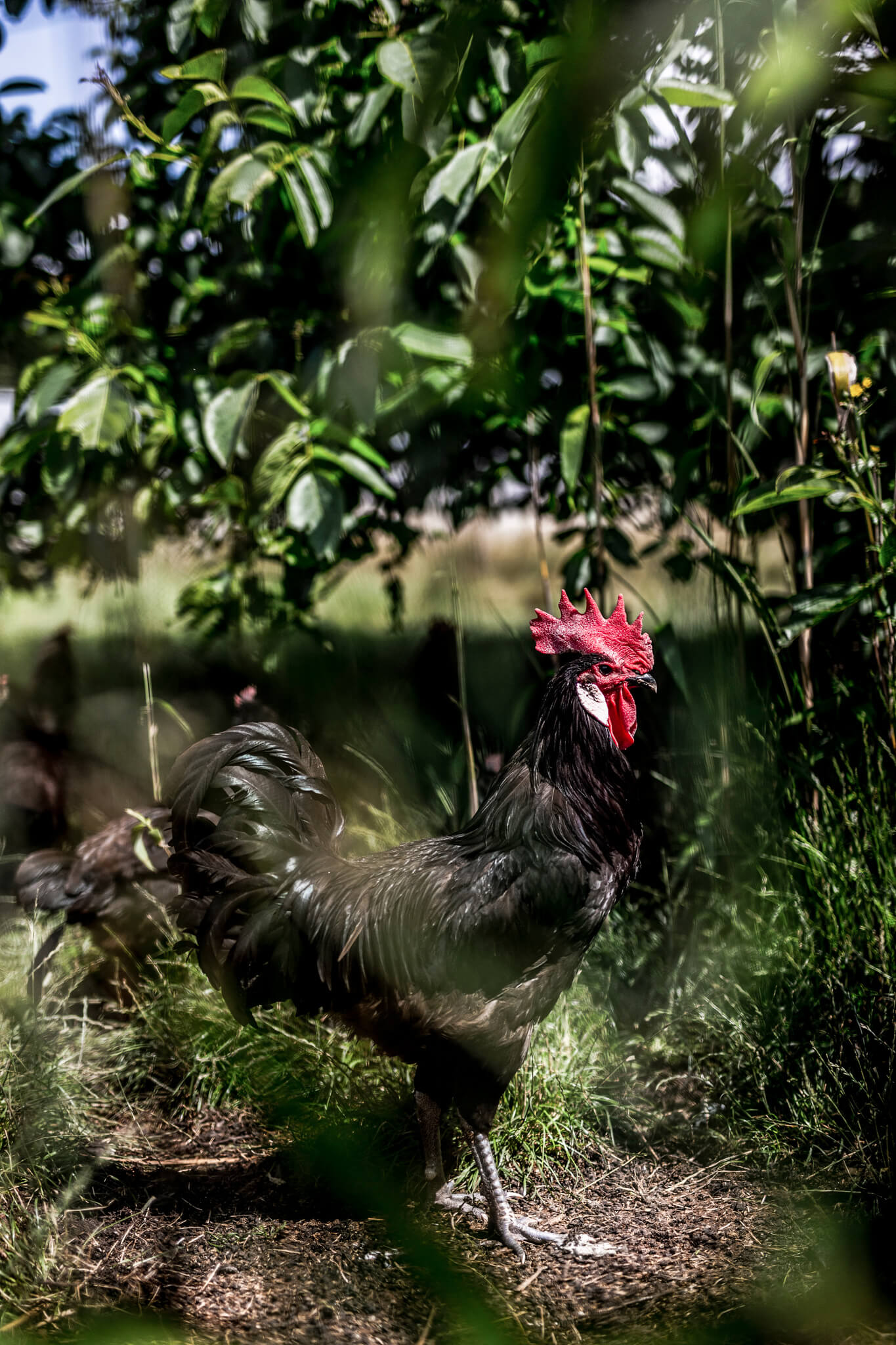
Image: Aurelio Rodriguez
His tip is almost philosophical: “You should respect the animals and their habitat, both in death and on the plate. You need a lot of courage, because that’s not easy. Farming that respects the soil and life makes cooking a miracle every day.”

Gascony pig | Image: Aurelio Rodriguez
Swiss dream team
The brothers Nessensohn are a well-practiced team: Adrian is at the stove – and Kay runs the farm where the meat comes from. In 2020, Adrian Nessensohn and his partner Svenja Bellmann set up their own restaurant Helvetia in Sankt Gallen. “Because of our passion for cooking and because the connection to food and its origins is very important to us.” Helvetia started with 14 GaultMillau points. Both have been in the restaurant business for 15 years and have earned their stripes in restaurants such as the Chesery in Gstaad or Lampart’s in Hägendorf. On his parents’ Lauftenhof farm in Lengwil, Kay Nessensohn raises Black Angus and Limousin cattle. He added Turopolje pigs four years ago. “I want to have healthy, high-quality, slow-grown meat that reaches the plate without the need to buy in feed, no hormone treatment and, if possible, without using antibiotics,” the farmer says.
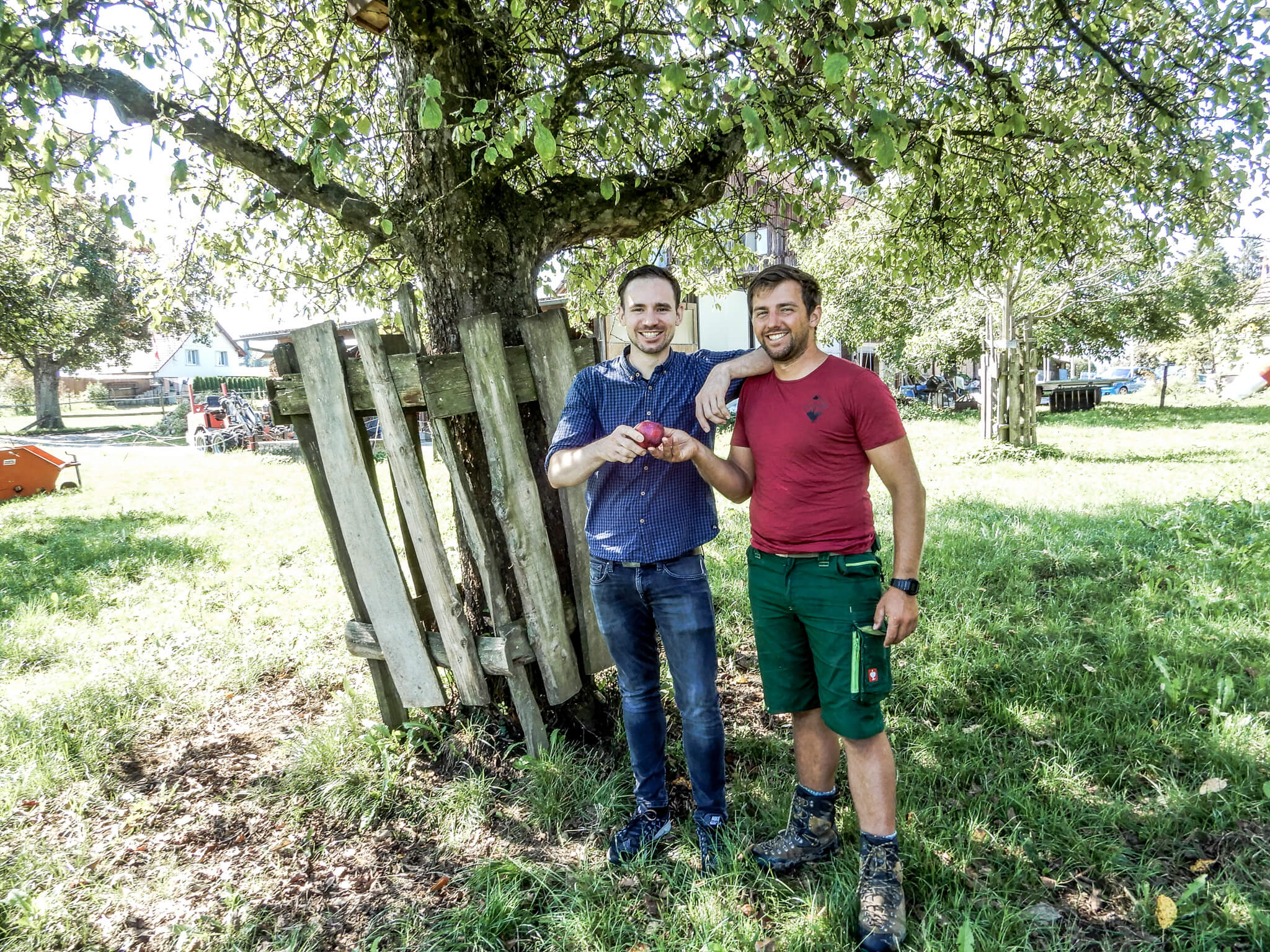
Brothers Nessensohn | Image: Nessensohn
It is a close collaboration. “Kay lets us know when an animal will be slaughtered. We say which parts we need or they tell us what else there is. Since we mostly only use second cuts, he can easily sell the noble pieces to others,” says Adrian. Both also work with a butcher to process the animal completely. A butcher also handles contract slaughtering for the company’s own sales. “We take the pigs’ ears and feet and cook them,” says the chef.
Vegetarian cuisine makes sense to Nessensohn. “We have very vegetable-rich cuisine, because we focus on conscientious eating. This is a good direction into the future.” People are omnivores. Meat consumption should be kept low, as is the case in nature. “Because in this way, livestock farming also becomes more animal-friendly again and is no longer viewed purely as a commodity and consumer good. Vegetarians are part of everyday life in the restaurant,” stresses the gourmet chef. On the other hand, veganism is a way of life and is rather difficult to implement. “We are also reluctant to do without eggs, milk and products such as honey”.
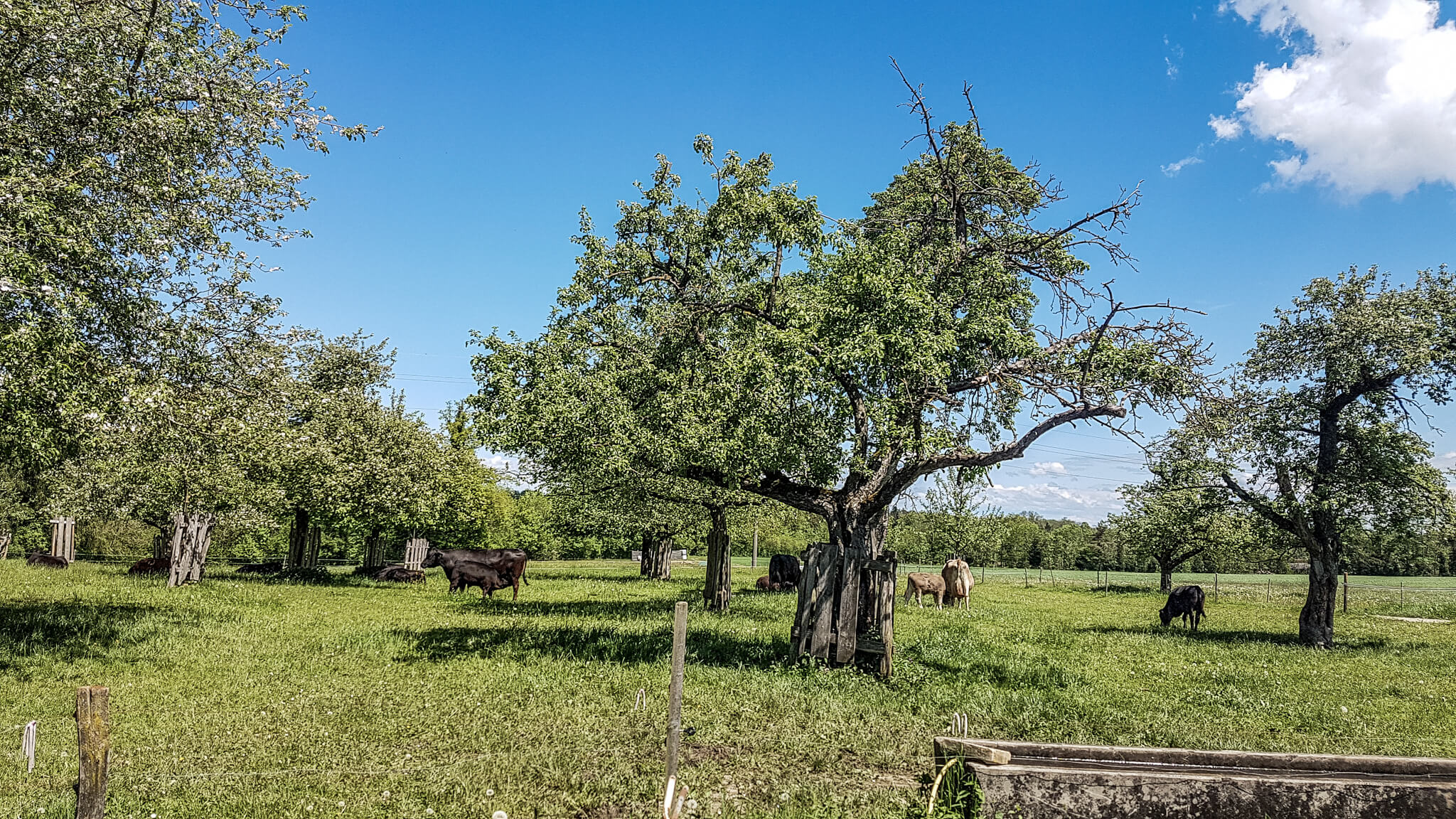
Image: Nessensohn
His tip? “Cultivating animals is time-consuming and takes up a lot of time. A cow weighs around 1000 pounds, of which 550 to 660 pound are meat. Only a small amount of this are noble pieces. There is a lot of hamburger meat or sausage. It is advisable to work with a good butcher. But if you are absolutely convinced, you can easily pass on your passion to the guests.
Digitalization in the hospitality industry: more important than ever before
All the interviewees agree that digitalization has become a very important topic in professional kitchens, although they name different advantages.
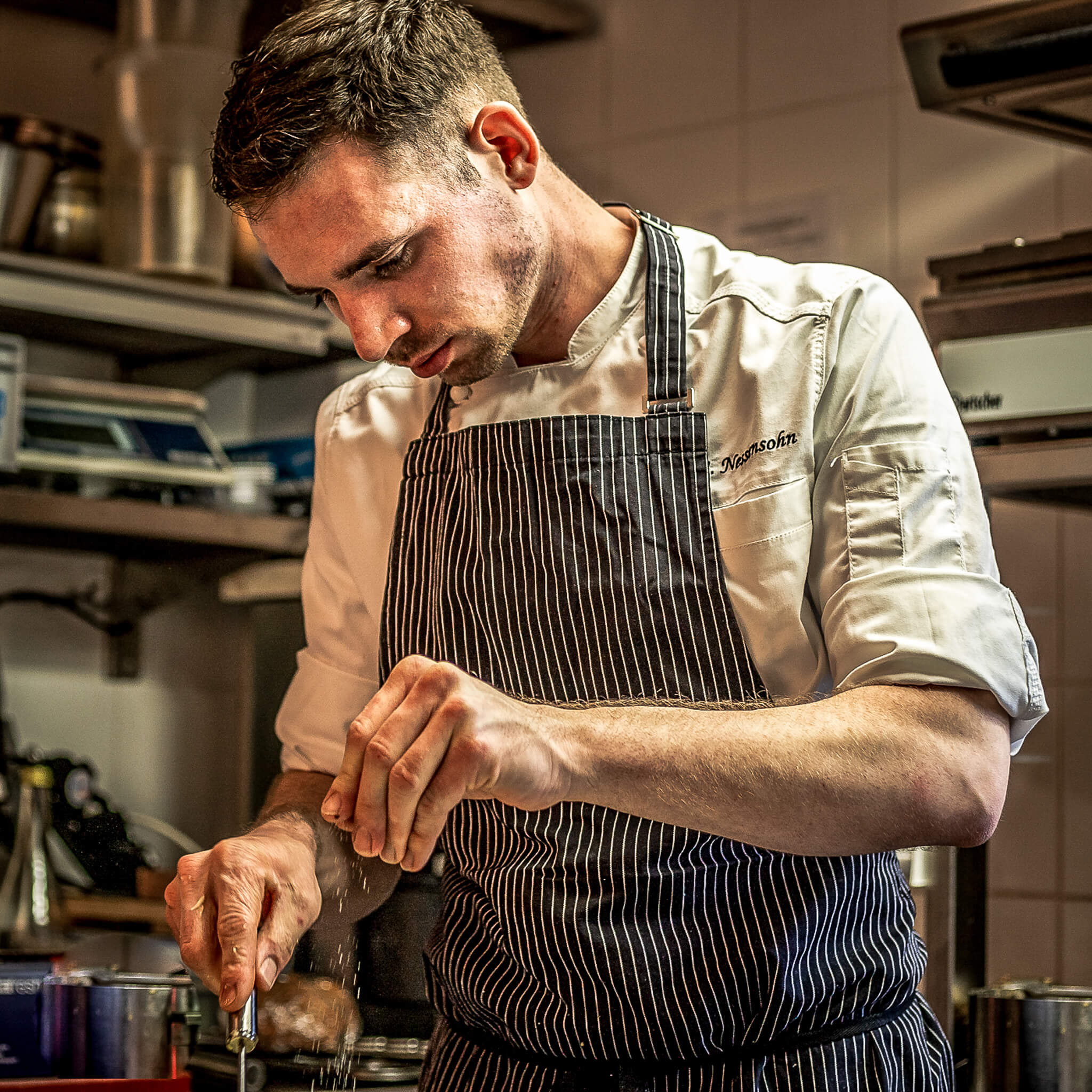
Image: Nessensohn
Digitalization to combat staff shortages and improve employee well-being
Franz Keller Junior has used a combi-steamer at Adler Wirtschaft for many years. “Units that are equipped with extensive sensors and precise parameter adjustment are an important factor – especially with regard to staff shortages.” In any case, it is practical and efficient: the appliances deliver consistent quality when you use quality products.

Image: RATIONAL
Intelligent appliances in the restaurant kitchen also help out Frédéric Ménager in his Ferme de la Ruchotte. “Cooking systems have evolved. We can cook at night and save a lot of energy. These tools save us a lot of time and affect employee well-being,” says the heavy metal fan.
Intelligent appliances for consistent results and a high level of flexibility
Digitalization in the kitchen also makes sense for Valentin Schwencke from Büffelhof. “We use a Rational combi-steamer. We really appreciate the fact that we have such flexibility in the cooking processes. It is suitable for both low and very high temperatures with different levels of humidity,” says Schwencke.
In his kitchen, the Swiss chef Adrian Nessensohn uses modern appliances such as the Pacojet, Thermomix, dehydrator cabinet and combi steamer to achieve better and more consistent results. “But since we have a small kitchen, nothing is fully automated, nor is it purely digital.”


